Lobbying to improve Hobart's traffic lights for people on bikes
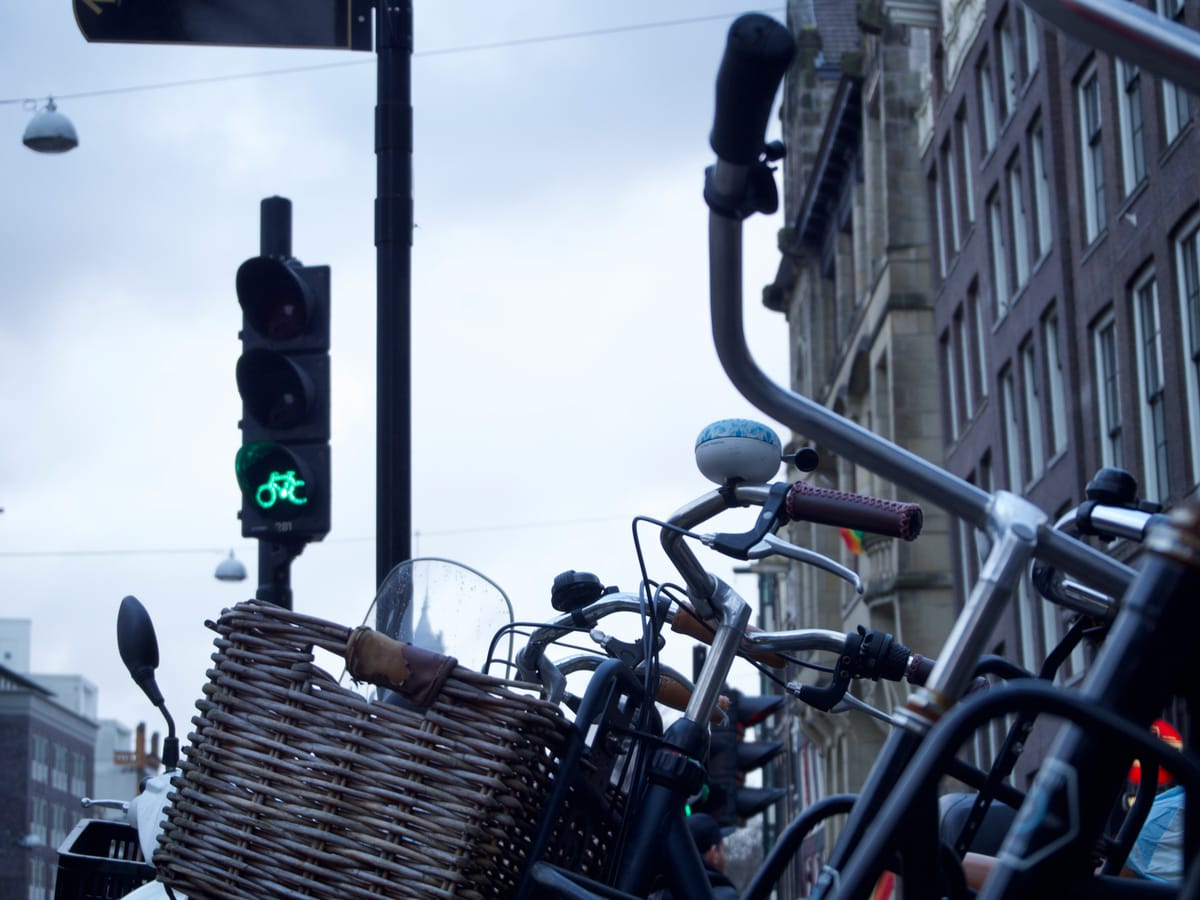
One of the benefits of a community group like Streets People Love Hobart is that discussion between members can reveal an iceberg below the surface. Issues that to an individual seem isolated are discovered to be much more widespread and impactful. The way traffic lights in Hobart work when people are riding bikes is the perfect illustration of an issue like this. Here's what the SPLH community has discovered is wrong with Hobart traffic lights and how we're lobbying to get them fixed.
TLDR?
Watch this video to get an idea of the problem.
A point-of-view video of a cyclist forced to wait through traffic lights that don’t cycle, and risky behaviour by another frustrated cyclist.
The Issue
How Hobart traffic lights work
During the day — 7am to 7pm — traffic lights in central Hobart cycle through their various phases automatically. That's why there's no point pushing the button.
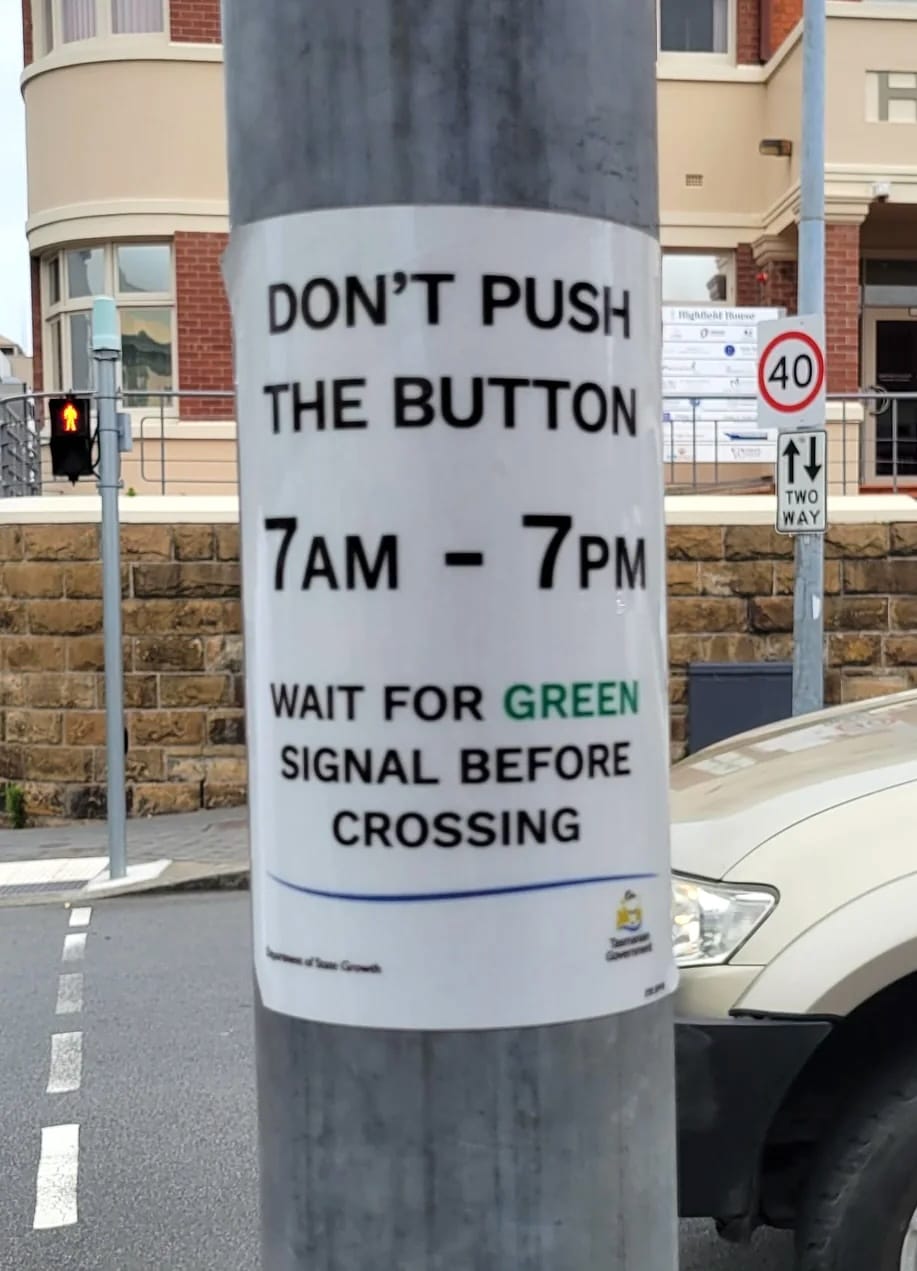
At night though, the story is different. The traffic lights become dependent on something triggering them to change. Either a vehicle is detected by a sensor buried under the road or a person pushes a pedestrian button.
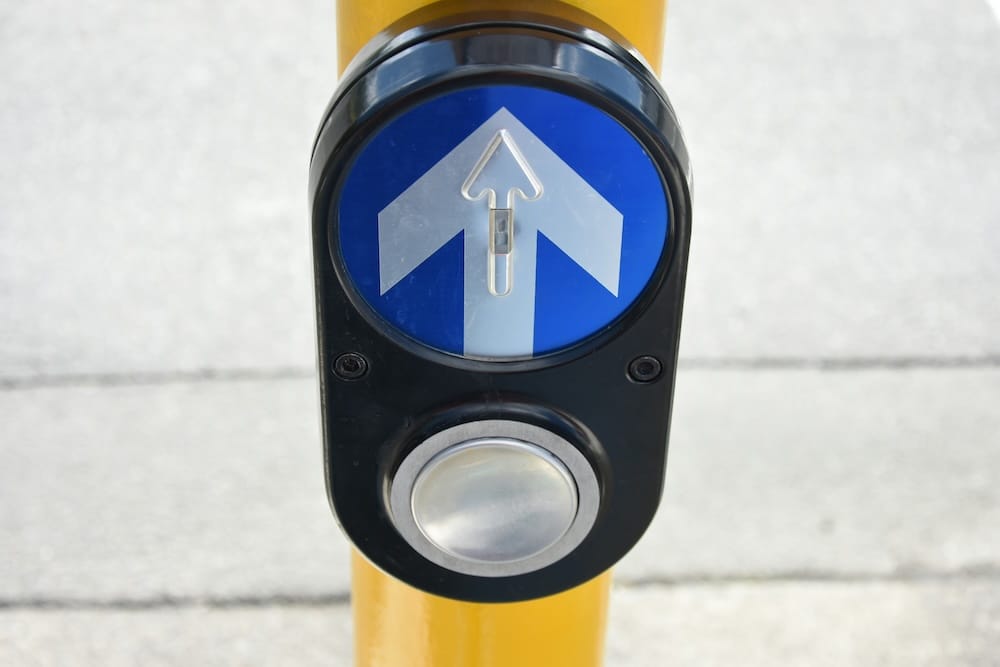
The issue for people on bikes
Sometimes the sensors detect people on bikes, but often they don't. There's two underlying reasons why bikes aren't detected:
- The sensors aren't located under the part of the road where people ride.
- The sensors aren't sensitive enough to detect the smaller amount of metal in a bike compared to a car.
This leaves people on bikes at a red light with a few options:
- Wait for the lights to automatically cycle — at night the lights at some intersections will do this, however many don't.
- Wait for a car or pedestrian to come along and trigger the lights.
- Go up onto the footpath to push the pedestrian button.
- Go through the red light.
Options 1-3 are at best slow and tedious, at worst futile. So many people choose option 4 and carefully ride through the intersection despite the red light. Unfortunately, there's been many reports to SPLH of people on bikes being pulled up by police for doing this.
SPLH Raise The Issue
We sent the following letter highlighting this issue to the City of Hobart, as well as the Department of State Growth which manages all traffic signals in Tasmania.
The increasing amount of infrastructure supporting safe bike riding in the city is incredibly welcome and to be encouraged. However it has exacerbated an existing issue related to traffic light sensors. Namely the induction loops used to detect vehicles waiting at traffic lights are notoriously inconsistent at detecting people on bikes. Shifting people on bikes to parts of the road away from existing sensors has meant people are increasingly becoming stuck at red lights because their bike hasn’t been detected.
Some intersections where people have flagged problems with detection of bikes include:
– Collins & Molle
– Collins & Barrack
– Collins & Harrington
– Collins & Murray
– Campbell & Macquarie
– Argyle & Bathurst hook turn
The Collins & Molle intersection is particularly concerning given the traffic lights are only a few years old and the upgraded intersection was ostensibly designed with bikes in mind.
When people on bikes realise the red light they’re waiting at isn’t going to change, their options are limited to moving onto the footpath to press the pedestrian button or going through the red light. The substantial inconvenience of the former means people often choose the latter.
Several issues result:
– Increased risk of crashes. Though this is mitigated to some extent by the low traffic volumes during the hours traffic lights operate based on sensors, and the fact the person riding has stopped at the red light and will have looked for other traffic.
–People can be fined for riding through a red light.
– People who don’t ride bikes see people riding bikes through red lights, contributing to negative sentiments towards riding bikes within particular segments of the community.
– People on bikes are unnecessarily delayed waiting for red lights to change (“will it, won’t it?”).
– To some extent people on bikes develop a “healthy disrespect” of traffic lights.
One particularly concerning incident involved a woman on a bike late at night who was seen by police going through a red light. The police didn’t accept her explanation that the light wasn’t changing, stating the lights are on timers and she should have just waited. They didn’t fine her but did proceed to follow her through the city, driving close to her and telling her (incorrectly) that she had to ride all the way on the left. The woman has since made an official complaint to police regarding unwarranted harassment and has spent hundreds of dollars on a camera to record future incidents as a form of protection.
An interim solution which should be implemented immediately is to change the programming of traffic lights between 7pm and 7am so that while they react to sensors and buttons, they also have a limit on the maximum time they will go without switching through all phases.
The longer term solution is sensors which reliably detect people on bikes. A video “Why the Dutch Wait Less at Traffic Lights” by Not Just Bikes on YouTube shows this is not only feasible but that traffic light programming can be improved for people walking, riding and driving alike.
We would appreciate the attention of both the City of Hobart and the Department of State Growth to this important issue.
The video referenced is interesting and well worth a watch.
Why the Dutch Wait Less at Traffic Lights
City of Hobart's response
Thank you for your correspondence relating to bicycle detection at traffic lights.
The City of Hobart works with the Department of State Growth, who are responsible for managing and maintaining traffic signals and related infrastructure across Tasmania.
As you note, in ground induction loops, which are the standard vehicle sensors used to make traffic signal controllers aware of traffic conditions, are not particularly well suited to detecting bicycles, especially for bicycles made with low amounts of ferrous or magnetic materials.
Regardless, I believe most traffic signals in the City of Hobart urban areas will ‘cycle through” alternative phases between 7am and 7pm.
From your letter, I believe you’re noting that the issue between 7 pm and 7 am is the more problematic one, where, depending on the actual “personality’ (programming) of an individual junction signal controller, there are times where signals may be dwelling on “red” on the street the bicycle rider is on for a long period of time.
We can discuss traffic signal operation at the junctions you have noted with our DSG colleagues.
With respect to other types of detectors, we understand that whilst some international examples exist of alternative detection systems which have been integrated with traffic signal systems, not all control systems are the same. We understand that the DSG has identified a bicycle rider detection device that may be compatible with the Tasmanian system and that they (DSG) may be in a position to trial this in conjunction with CoH later this year.
In respect of people riding bicycles becoming impatient with waiting for traffic signals to change and going through red lights, I would note that changes to road rules some years ago allow bicycle riders to use pedestrian crossings, and it is always preferable to advise people to use the pedestrian crossing button and cross on the pedestrian crossing if they believe the traffic signals are “taking to long” to change.
Department of State Growth's response
Thank you for your email of 8 July 2025 regarding traffic signal detector loops and their effectiveness for cyclists.
The Department of State Growth is responsible for installing, managing and maintaining all traffic light signals across Tasmania. Where signals are located on council-owned roads, the relevant local government authority funds and investigates any changes while working with the department to ensure design and safety requirements are met.
The department uses in-ground vehicle detector loops at traffic signals to help manage traffic flow and reduce waiting times. Because these detector loops operate by detecting magnetic materials, they may be less reliable for cyclists.
We acknowledge that this is a frustrating matter for cyclists, and we continue to investigate different technologies that may improve the detection of cyclists at traffic signals.
Although some bike detection systems have been successful oversees, such as in the video you shared, these are not necessarily compatible with the traffic signal control software used in Australia. However, we are aware of recent developments that have potential to greatly improve bicycle detection and we plan to work with City of Hobart to trial such technology at selected traffic signals in the Hobart CBD later this year.
We appreciate your suggestions for changing the operation of traffic lights between 7:00 pm and 7:00 am. We will discuss potential traffic signal operational strategies with Council, noting that changes to benefit one road user group may impact on others.
Thank you for sharing your feedback and recommendations. The department will continue to work with Council to investigate and trial new technologies that improve the reliability of bike detection at traffic signals.
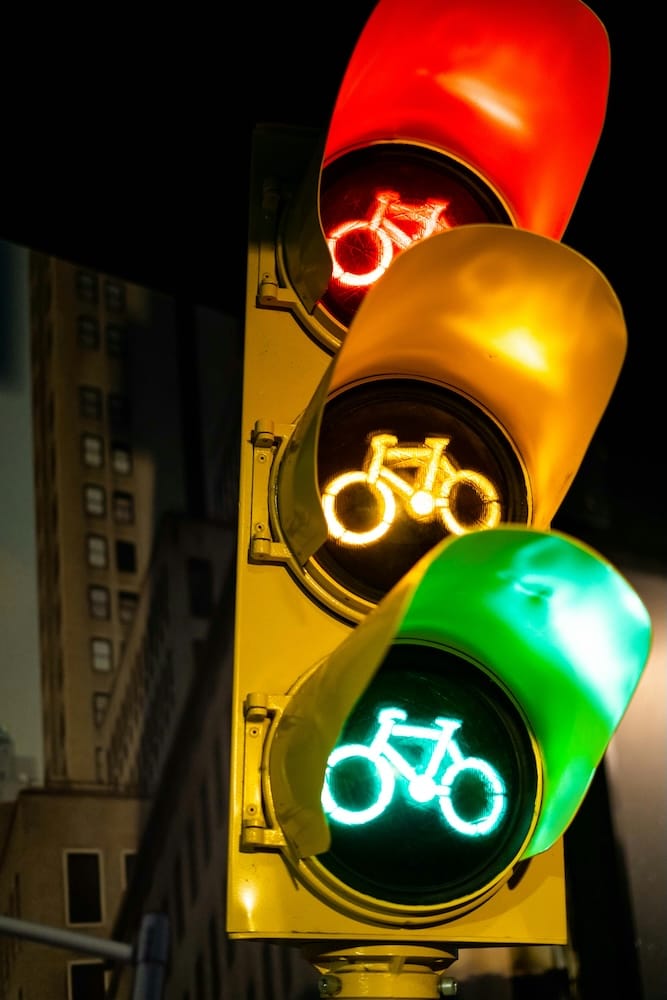
Lobbying Stage Two
What's encouraging in the responses
- Acknowledgment there's an issue.
- A commitment that CoH and DSG will work together to fix it.
- A trial of better technology planned.
What's not encouraging
There's a lack of understanding of the severity of the issue:
People riding bicycles becoming impatient .... if they believe the traffic signals are "taking too long" to change.
It's not impatience. The traffic lights aren't just taking a long time to change, they're not changing.
There's also no acknowledgment that the location of the sensor is a contributor.
SPLH's next step
We filmed a video! It confirms:
- Traffic lights are not automatically cycling.
- The location of the sensor is part of the problem.
- People on bikes are resorting to going through red lights.
- Bonus issue — people are parking cars in bike lanes and police are not consistently enforcing it.
Where To From Here
Streets People Love Hobart will keep lobbying for improvements.
If this traffic light issue has effected you, please tell CoH and DSG about your experience:
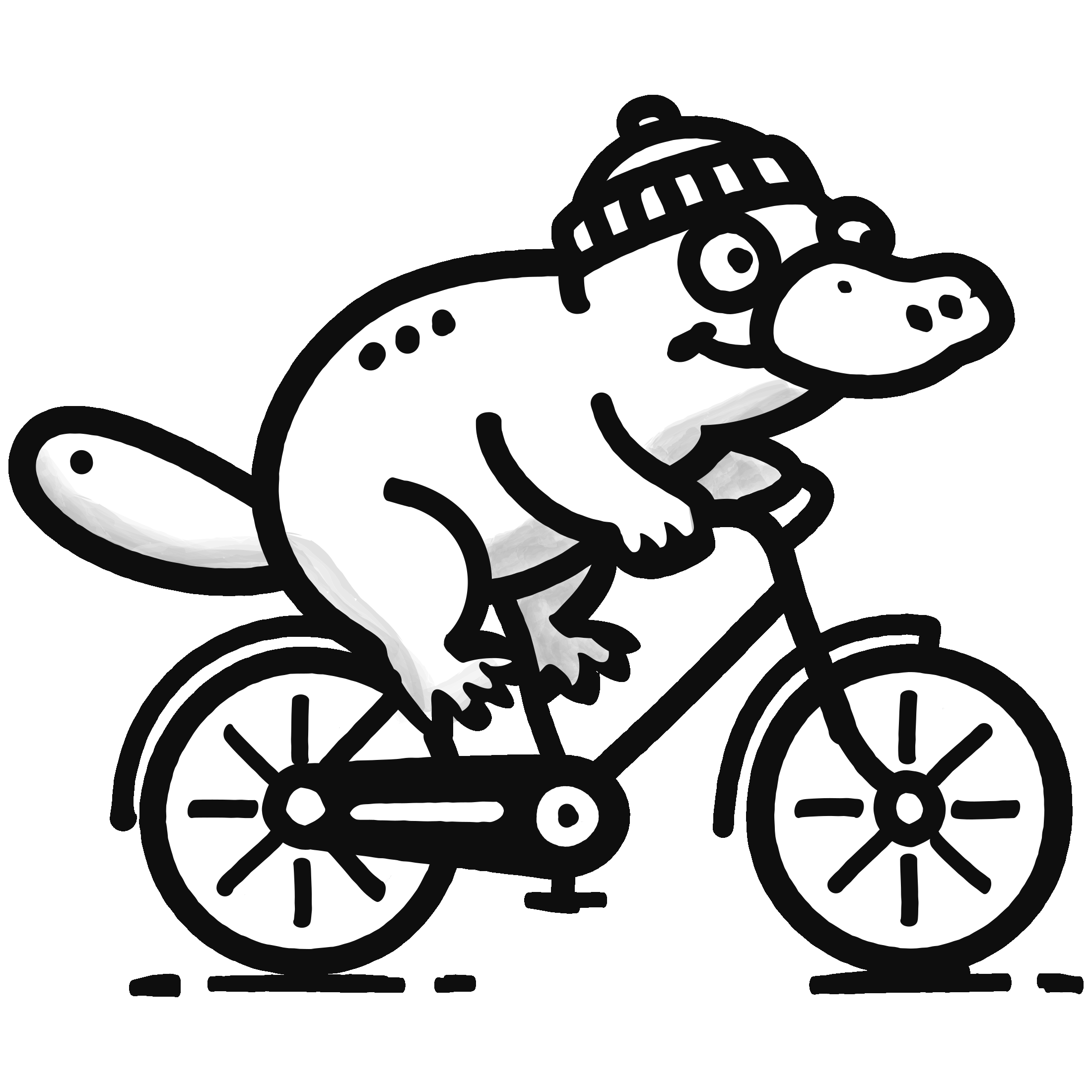


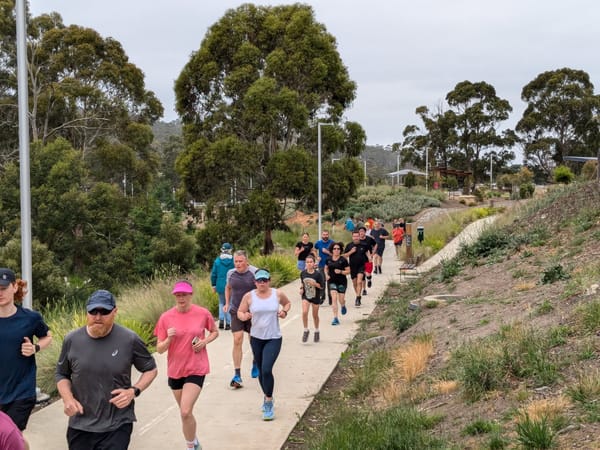
![BIKE RAVE: Saturday 30th August [UPDATED]](/content/images/size/w600/2025/08/518300545_4101374346809291_4287029871165551635_n.jpg)